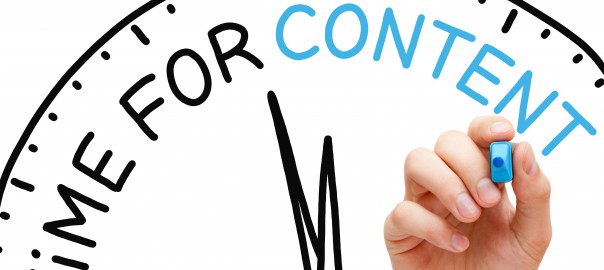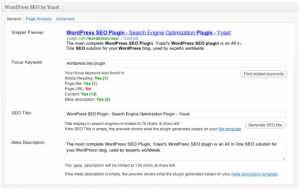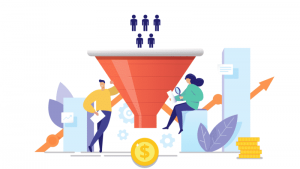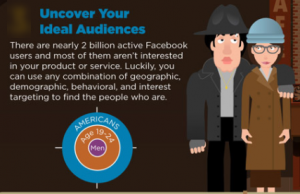
One of the key benefits of LinkedIn is that, after you’ve built up your network, (and as you continue to build it), you can publish content to the site. Anyone can publish to LinkedIn, and as you grow your network, any content you publish will be pushed to all of those connections.
By continuing to demonstrate your expertise through this content, you’ll build up your thought leadership, which, as we’ve mentioned once or twice, is a critical piece of online marketing. People want to connect to a person, not just a brand, and thought leadership is the process of building out a personal brand for yourself online, even if you are representing a company. Publishing valuable articles from a human perspective is hugely valuable in helping you achieve that, and LinkedIn is the best platform to do it.
LinkedIn is one of the biggest publishing media sites in the world; they’ve truly built up the site as a strong source of relevant content for influencers and leaders in the field. To give you an idea of the scope, LinkedIn recently reported that 1 million unique professionals publish more than 130,000 posts a week on the site. The average post reaches professionals in 21 industries and 9 countries, and about 45% of readers are in the upper ranks of their industries. The numbers and evidence don’t lie: the hype around publishing on LinkedIn is very real.
There are two ways to share content on LinkedIn. The first is short Twitter-like updates on your profile page, company page or on a group’s feed. These should essentially be short blurbs summing up a blog post or relevant article you’ve published, and include a dynamic picture and a link to the article. These have the advantage not only of building up thought leadership, but also generating traffic to your website.
The second distribution method is publishing full length posts on your profile that are shared with your connections. These are long form, as opposed to the short format allowed in the group and company updates. You can copy the full text of an article or post you’ve written on your site, and just press paste and publish on LinkedIn. To increase engagement, include some sort of link or call to action back to your website.
Now, we’re working under the assumption that you’ve already followed the steps of inbound marketing until the distribution point, which means you’ve already worked really hard to create content on your blog and website that’s relevant and educational to your target audience. And since LinkedIn is handing you that very audience on a silver platter, it seems like all you need to do is click share, right?
Well, almost.
There are two key components to keep in mind when deciding what to share on LinkedIn The first is to ensure that your content is indeed relevant here. If you are targeting multiple personas, then chances are you have written content for each of them, which means that not all pieces are relevant to each member of every group you have joined.
But LinkedIn lets you put the right articles in front of the right people. Your content was written with intention; don’t let that focus get lost by sharing it with the wrong group. For example, we at The Brand Builders give a lot of marketing advice, but not always to the same people. So we might share an article about the importance of best content practices with groups of marketing professionals, whereas groups that include CEOs and business owners might instead prefer our piece about why inbound marketing leads cost less over time.
(We’ll discuss identifying the right groups a lot further in a separate blog post.)
The other thing to remember is that this is a forum for the audience to engage with your content–so make the content engaging. Don’t let your piece get lost in the ever-flowing content stream. Here are a few ways how:
- Ask a question when you post or start a discussion in order to elicit a response.
- Optimize your headline to catch people’s attention. What makes a good post headline will make a good LinkedIn headline. Some popular styles include headlines containing statistics, “how-to’s, or “top 10s.”
- Study prior popular discussions to get an idea of what topics resonate most with group members. Similarly, observe the contributions of more active group members in order to understand their concerns, goals, and objectives.
- Include an image, but avoid videos or other types of multimedia.
- Post at the right time. Studies show that articles are read most between 7am-8am, 5pm-6pm, and on Tuesdays from 10am-11am. But that’s not a definitive time frame; experiment and find the right time for you and your followers.
But there’s always a caveat. When optimizing your copy, don’t come off as too promotional. LinkedIn has a careful moderation system in place, which combines the input of group managers with feedback from group members themselves. This closely monitors the type of posts by a given member, and has been known to block or hide posts from members who use language or context that is overly self-promotional, repetitive, non-relevant, or ‘spammy.’
They’ve also been known to block members who post too frequently on a given group. Don’t clog the group discussion board, or moderators might think that you’re posting without thought or consideration. Aim to post a couple of times per week so that you’ll stay visible without becoming annoying.
Your optimized LInkedIn profile won’t be worth very much if you’re not putting yourself out there by sharing relevant content. You already know the important role relevant content plays in your online marketing campaign. Now’s where you use that content to earn the attention and engagement of the relevant connections you’ve earned on LinkedIn.
Digital & Social Articles on Business 2 Community
(90)
Report Post






